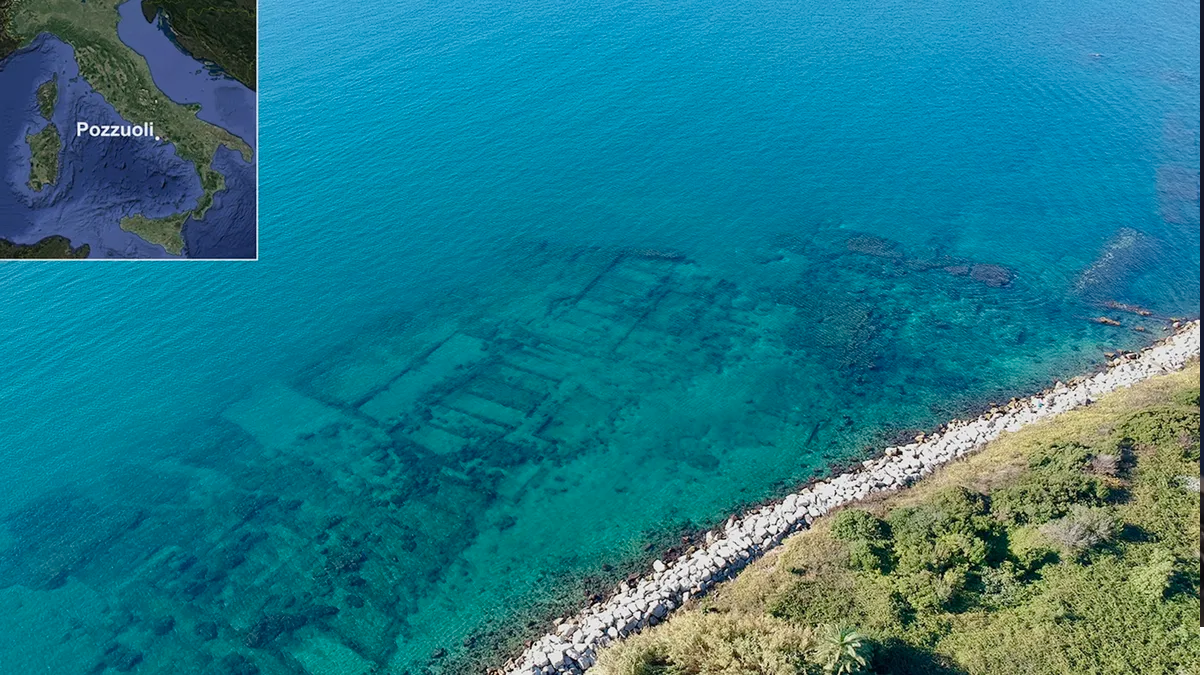(NLDO) - People from the mysterious and luxurious Arab kingdom of Nabataea left traces of their civilization on the shores of the Mediterranean.
According to Live Science , the ruins that archaeologists found near the coast of Italy are an ancient temple established by people from the Nabataean Kingdom on the Arabian Peninsula 2,000 years ago.

Traces of a large city containing an ancient Arab temple have been discovered near the coast - Photo: LIVE SCIENCE
The article published in the scientific journal Antiquity said what remained of the temple included two ancient altars and inscribed marble slabs, buried under pieces of concrete and broken pottery.
“For me, this is one of the most surprising discoveries ,” said the study’s first author Michele Stefanile, a maritime archaeologist at the Southern Graduate School (Scuola Superiore Meridionale – Italy).
The temple is located off the coast of Pozzuoli, a town about 10 miles east of Naples.
During Roman times, the area was home to a city called Puteoli, which had a large trading port.
Volcanic activity over centuries has dramatically altered the coastline at Pozzuoli, submerging and preserving about 2 km of Roman warehouses and other buildings associated with the ancient port.
Artifacts recovered from the sea in the 18th century suggest a buried temple, but no one knows exactly where.
A study starting in 2023 to map the area's seafloor has discovered two sunken chambers with Roman-style walls.
Two white marble altars are set against the walls of a room, both containing a number of rectangular niches, which may have formerly housed sacred stones.
Each room also contains a marble slab inscribed with the Latin words "Dusari sacrum", meaning "dedicated to Dushara", the main deity in the ancient Nabataean religion.
The Nabataean Kingdom stretched from northern Arabia to the eastern Mediterranean, with its capital at Petra, one of the seven wonders of the modern world .
During the 4th to 2nd centuries BC, the Nabataeans controlled a growing trade network in luxury goods such as spices, perfumes, gold, ivory, etc. Therefore, life in this ancient kingdom was extremely lavish.
Source: https://nld.com.vn/den-co-a-rap-2000-tuoi-bat-ngo-hien-hinh-gan-bo-bien-y-196241026110037001.htm




























































































![[Infographic] In 2025, 47 products will achieve national OCOP](https://vphoto.vietnam.vn/thumb/402x226/vietnam/resource/IMAGE/2025/7/16/5d672398b0744db3ab920e05db8e5b7d)





Comment (0)